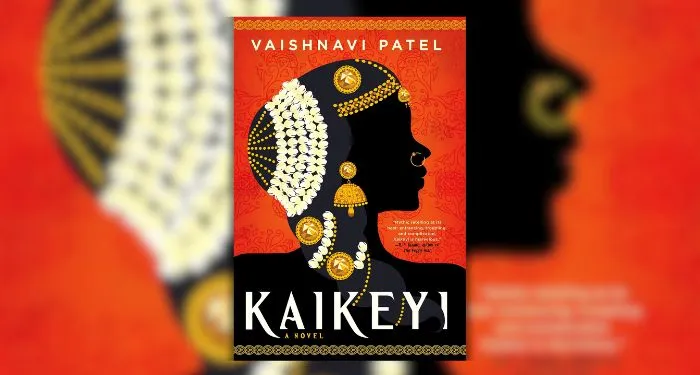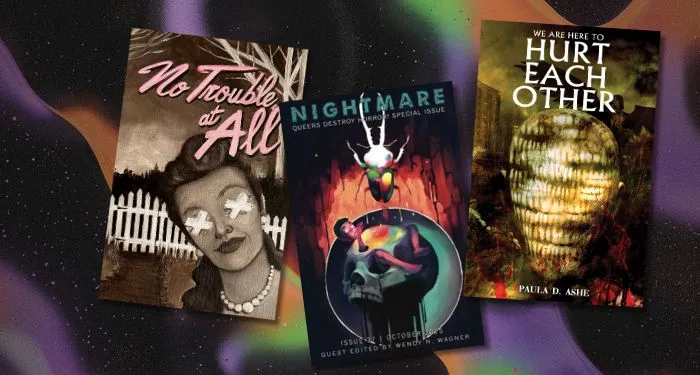In Radu Jude’s Romania, people don’t have a good word to say about the country or its citizens; on the contrary, they curse the place with a vehemence as funny as it is obscene. Making crude jokes about “Romanianness” passes for the country’s national pastime and even, in the form of Jude’s cinema, its chief cultural export. The humor is willfully tasteless, unless you count the taste of shit, an expletive so ubiquitous it amounts to a grammatical particle. It’s everywhere appropriate to call a job a “shit job,” or to remark on the “shitty part” of one’s neighborhood, or to harass women for their “shit skank faces.”
Romanian political history is one source of this cinema’s flagrant foulness: heiling Hitler in 1940, hailing Stalin in 1944, hurtling toward nationalist retrenchment in 2025, Romanians, Jude keeps reminding us, have drawn fascisms like filings to a magnet. Nationalist fervor, stoked by conspiracy theories and revisionist histories, saturates his dialogue. A palace in Bucharest, built for a Communist dictator, and a monument in Cluj, commemorating the anti-Communist resistance, serve as equally looming backdrops. “I’m not joking with history,” one character says. But that would be redundant, since the country’s history is already Jude’s most polished joke.
To watch, and inevitably laugh at, one of Jude’s films in America, however, doesn’t feel like cinematic slumming. If he holds up Romania as the shithole country, we’ll remember that this term of art is our own. There’s uncanny comedy in watching Jude’s ugly cinema as an ugly American. It’s similar to the feeling of learning that Russian bots were fueling our homegrown culture wars. Or that workers in the Philippines have been quietly scrubbing our Facebook feeds of toxic content. Or that Andrew Tate, titan of our Trump-electing manosphere, was being held on charges of human trafficking in Romania itself. Jude scores his slurs to the theme of the Romanian national anthem, but in our country, where civility has become politically inviable and local injustices are networked throughout the globe, we can hum along. We brace ourselves for Jude’s expletives, only to realize that we’ve already been wearing that psychic brace for the past decade if not longer. We need it just to face the morning news.
But let’s dialectically reverse course. For if you really have been raised in a shithole, how do you ever cultivate sufficient sense of smell to know better? The other face of Jude’s Romanians’ coarseness is their fine-tuned erudition. In the midst of their unabashed vulgarity, his people are constantly citing famous Romanian intellectuals, poets, or artists, and, with equal ease, high-cultural figures from all over the world. His characters talk shit, but they are also reading Proust and Kenkō, or quoting Brecht, and seem to have seen every movie under the sun. In Jude’s cinema Romanian specificity implies a universal cultural literacy, which explains not only why it’s full of Romanian references that American viewers are unlikely to pick up—we are being exposed to stereotypes about Eastern Europeans we didn’t even know—but also why Jude’s work addresses us so trenchantly.
Paradoxically, then, Jude’s regional surrealism might be the strongest version of a global cinematic realism. With each new film, he dredges up new material and new visual forms to mediate between a national culture and the totalizing structure of feeling that is currently being called the “enshittification of everything.” What kinds of ethical conundrums does this new realism explore? From where does it source its images? Jude loosely divides these questions between his two newest releases, Kontinental ’25 and Dracula, both of which demonstrate his restless effort to reinvent realism from its neorealist ruins. That both premiered at the most recent New York Film Festival confirms how much Jude’s archly provincial grotesqueries now speak to a global condition.
*
For the first twenty minutes of Kontinental ’25, the spectator witnesses the daily life of a contemporary leper: the Homeless Man. The camera maintains a rigorous distance from him, doubling down on the social shunning that defines his existence. There are no close-ups, no angles that might even suggest an inner life. Even the rare medium shot catches him only in profile, inscrutable; we never see his eyes, nor do they ever meet ours.
On this showing, he never becomes a person, let alone a poor soul. With his blue plastic bag of cans and bottles, he is merely an urban icon, paired with his “attribute” as martyrs in painting are paired with the instruments of their torture. The depthlessness of the portrait is its truth: this is a man deprived of both social integration and psychological density. His abjection is literal. He lurches when he walks, devours food like an animal, drinks booze from the bottle, relieves himself in public. His mutterings, as primitive as his gestures, seldom rise above catchall obscenity. “Fuck you” is his response to every situation, and for all its coarseness it remains le mot juste for a condition that doesn’t bear much nuancing. Unlike Chaplin’s Tramp, he is never moralized into pathos; unlike Renoir’s Boudu, never celebrated as the life force in clochard clothing.
The film does offer us, though, a clarifying cinematic comparison. “We need Hirayama,” one good citizen of Cluj jokes, referring to the serene toilet cleaner in Wim Wenders’s Perfect Days (2023). Hirayama cleans with a Buddhist grace whose radiance seems to purify the toilets in advance of any labor; he is a hygienic fantasy incarnate, a panacea for human waste in both senses of the term. By contrast, Jude’s Homeless Man ekes out his unlivable living by collecting bottles and cans for recycling; he leaves the serious shit where it lies. The charmless antitype of Hirayama, he is not the cleanser of filth but its embodiment. Passersby avoid him as gingerly as they would skirt a dog turd. Jude captures, with ethnographic precision, the small gestures by which ordinary people—café patrons, parkgoers, lovers, parents, and inevitably the viewers of this film once we leave the theater—deny his presence. We avert our eyes, alter our paths, rely on management or police to strong-arm him away. Occasionally we reach for a purse to buy him off.
Yet under sentence of social death, he persists in living, haunting and befouling our every feast. There are only two ways to solve the “problem” he represents. The long-term solution is simply to kill him—either, say, by means of involuntary lethal injection, a modest proposal recently floated on American television by a Fox News host, or—the humane alternative!—by consigning him to that barbarously inefficient management system the film calls the Shelter. Meanwhile, we do our best not to see him. In its studied refusal of proximity, Jude’s camera thus formulates a paradoxical ethics, at once mimicking and exposing the collective gesture of exclusion. The aesthetic distance it maintains is the moral distance it asks us to measure. The frame does not avert its gaze so much as hold it steady—until looking away becomes indistinguishable from looking at looking away.
*
By the end of this day in the life of the Homeless Man, the film has spelled out the murderous collective rage to which he is subject—the fate to which everything in his life has doomed him. In the disused boiler room that is his only refuge, he is barged in on by a bailiff and gendarmes. Finally, he has a name—the one on an eviction notice. A construction company is tearing down the building to erect a luxury hotel called the Kontinental Boutique. Finally, too, he is looked at up close, by the masked gendarmes wielding blinding flashlights, and even filmed, lest anyone claim abuse. The bailiff, a middle-aged woman named Orsolya (Eszter Tompa), gives him twenty minutes to gather his belongings and promises to help him find a shelter (though they are, he claims, full). Left alone to pack, he wraps a wire around his neck, fastens it to a radiator, and trusts to his heavy body—the same thing that had made walking difficult—to hang himself. He is not blind to the import of his act: under his shoe the camera lets us see what no character has noticed, an old paperback of Malraux’s Man’s Fate. He has chosen to oblige—and so to dramatize—the social unconscious.
The film then shifts register. It becomes the story of Orsolya the Bailiff, wracked by guilt at the suicide and uncertain what to do with it. She, of course, is a person, and in art cinema an eminent one: the painfully sensitive woman whose emotional intelligence, tuned like a Geiger counter, detects every trace of inauthenticity in her—and our—social existence. (The film proposes Irene in Rossellini’s Europa ’51 as a model, but we might also take any of Monica Vitti’s Antonioni heroines.) Compulsively, like a seeker in a fable, though it’s never clear what she is seeking, Orsolya goes from one interlocutor to another—to the police, the construction company representative, her husband, a woman friend, her mother, a former student, and finally her priest—repeating the same two points: that she is not legally at fault, but that she feels very guilty nonetheless.
“I should have seen it coming,” she says. “I could have…had I known…” The others (with one exception) tell her what anyone would: you are not to blame…you can’t help everyone…what more could you have done? Jude’s irony is practically Austenian in the fine shadings of these rote reassurances; bourgeois life does bear nuancing! Orsolya’s husband dismisses her response as “nonsense,” a female foible that, even as it irritates him, not unpleasantly confirms his own rationality. The woman friend proffers a more sisterly formula—“I hear you”—but soon wearies of hearing: “there’s no reason you should go on fretting about this.”
*
The film’s audacious wager is to devote most of its running time to a dialogue between two increasingly naked kinds of bad faith: the bad faith of “feeling guilty,” which psychologizes and so displaces the social question, and the bad faith of trivializing that guilt—and trivializing the question in the bargain. Common sense, voiced by Orsolya’s mother, tells us that her response is “normal.” Yet it is anything but. No one shares it, much less finds it an unshakable, intolerable state of mind. After all, it took an extraordinary, unforeseeable event for the Homeless Man’s impossible condition to breach her psyche in the first place. But now, the layers of her niceness pierced through, she can’t relax in Greece with her family—or even “hard-fuck” her husband there as they’d both fondly imagined.
For a while, it looks as if this affable, even motherly bourgeois bureaucrat has acquired the agonized consciousness of a character in Dostoevsky—a soul par excellence. But the course of repetition soon flattens her into the opposite: not a soul but an automaton (like the robot dogs prowling the parks of Cluj) programmed to enact a limited, fixed repertory of gestures. We begin to see her identification with the Homeless Man as if some part of his condition had been transmitted to her. “If I didn’t have you and the children,” she tells her husband, “I’d have killed myself too.” She walks through the same dinosaur park the Homeless Man once frequented, where she is, like him, vaguely at home among the animatronics. And having thanked and even apologized to the corporate authority who’d phoned to check on things, she barks “Fuck off” the moment she hangs up. This identification cuts much deeper than what Orsolya herself half-diagnoses as a “poverty safari.” It feeds on the profound terror the homeless produce in the housed: the fear that we, at the mercy of mortgages, gig work, or an increasingly tattered social safety net, might easily become them, as they in fact had once been us.
Thus Orsolya most resembles the Homeless Man in her determination not to be put off the ethical singlemindedness of her position. Her “I feel, very, very guilty” is his “I won’t go to the shelter.” Both statements are profound, profoundly unacceptable refusals of the consolation on offer. He was looking for something that could not be found in a shelter, even if a shelter could be found: a home. She, likewise, is desperately seeking something the well-adjusted bourgeoisie of her world necessarily lack: a good conscience. Her comforters are not more innocent than she is, their consciousness is just as false. This liberal impasse—her bad faith in asking for exculpation, their bad faith in denying her guilt—resounds throughout the film. Kontinental ’25 makes us contemplate a world in need of a systemic analysis that none of its inhabitants can supply.
That is why the resolution of Orsolya’s suffering can only come through religious means. If one no longer turns to Marx (suspect in the post-Ceaușescu world), one can still look to Jesus. (And “Romanians love Church stuff,” as a character in an earlier Jude film caustically observes.) Orsolya’s priest, Father Șerban, is in fact an insufferable man, his patriarchal entitlement amplified by his professional tie-in with the Lord. He is as fluent as anyone in the truculent idiom of the street: “If I catch you,” he threatens an annoying child in the park, “I’ll break your legs.” Inevitably, he also “knows a few shelters,” perhaps could have even found a place for the Homeless Man. But his obnoxious virility allows him to see something in the Homeless Man’s suicide that the others all miss: that it was a deliberate act of will. “Such determination!” he says almost admiringly, even as he condemns the deed with Dantesque ferocity. The category of “sin” also gives him license to urge Orsolya not merely to feel guilty, but to be guilty, and on that basis to ask and receive the Lord’s forgiveness. With perhaps a few adjustments (Orsolya might go back to teaching), life resumes its orderly course; even the Greek vacation becomes possible after all.
This anticlimax is where Kontinental ’25 most bluntly defaults on its debt to its ostensible model, Europa ’51. Rossellini’s film pictures Irene as a bourgeois housewife, whose choice to surrender her comforts rather than tolerate the inequities on which they depend is legible to others only as a form of madness or saintliness. Her own humanity is sacrificed either way. The film concludes with a close-up that turns Irene’s mute agony into the sign of an insoluble social system—one that ignores or ennobles human suffering sooner than redress it. But Orsolya, finally, isn’t asked to carry such conflict for Jude’s cinema; she accepts the specious reconciliation of moving on. Her face will never fill the screen as Irene’s does, scaling up from the individual to the collective, signifying calamity for a whole continent or world order.
The buildings of Cluj shoulder that load instead. All along, Jude has punctuated the story with cryptic architectural interludes—assorted shots of city facades. Some are fit for a tourist brochure; others, luxury apartments, look like residences at the Kontinental Boutique before the fact; still others are the cheap, ugly boxes that now full Cluj as they do any megacity in China. The film ends with a long, affectless montage of such buildings, many under construction. But they no longer look cryptic, only banal. “Real estate developers,” Orsolya says during her crisis of conscience, “run Romania”—and the closing images seem to confirm it. There is, certainly, a lot of development. The shelters will remain full.
*
If Kontinental ’25 ends amid the real-estate boom that metabolizes every vacant lot (or evacuated building) into capital, Dracula begins in the same digestive system, only now the waste itself speaks. The Homeless Man’s body was the system’s privileged site of expulsion. In Dracula the expelled matter—now expanded to include all the waste the system produces—returns as a monstrous figure who feeds on it. Here, no traditionally conceived character even pretends to embody the contradictions of today’s world. No single subject can account for a global capitalism whose machines of production are celebrated precisely for the unhuman junk they excrete. Instead, Jude invents an Unhuman Being to speak for the slop of our lives.
“I am Vlad the Impaler Dracula, and you can all suck my cock. I am Vlad the Impaler Dracula, and you can all suck my cock. I am Vlad the Impaler Dracula, and you can all suck my cock.” The line repeats sixteen times at the start of Dracula, each time in the voice of a different AI-generated amalgam of Vlad the Impaler, the fifteenth-century Romanian prince, and the Dracula of B-movies and Halloween costume shops. Each image stages him in a different setting (Vlad Dracula as a baby, Vlad Dracula in outer space), several bearing the glitches inherent in their generation (missing fingers, bats that are only dark blobs). Collectively, they bind their subject to their mode of production: these are undead images; resurrected from a visual archive with no historical memory, they haunt us for our pleasure.
The viewer might expect the film to proceed apace: all slop images, all the way down. Instead, a chatbot takes the form of a character, and AI becomes the conceit of Jude’s camp comedy, not the origin of its visual panoply. With a name, Dr. AI Judex 0.0., and a narrative function, this AI system is not real—though if ever scare quotes were needed around this word, it might be here—but fictional. Like a genie in The Thousand and One Nights, it obeys the commands of an unnamed director stand-in played by Adonis Tanta. Together, Tanta and AI Judex develop a film “based on the Dracula myth,” which, in their rendering, belongs variously to Transylvania and Hollywood, Gothic fiction and Soviet romance. Dramatizing the kind of human-machine collaboration that some sectors of the economy herald as the future of storytelling, Dracula nonetheless builds up the legend of this devil through distinctly human-made, even amateurish-looking, vignettes. Shiny, flat, “slop” images punctuate them at random, serving only as reminders that this cinematic valley of the shadow of death can turn uncanny whenever Jude wills it.
Tanta instructs AI Judex to “find a way for Vlad the Impaler and Dracula to become one and the same and appear in modern-day Romania,” adding, “I want it to be the bomb. But with some deeper, philosophical stuff too…something Science-y.” Assembled through such prompts, Dracula is “pieced together,” as Tanta tells us, like that other canonical monster Frankenstein. These pieces recenter the Romanian figure whom Bram Stoker brought to Britain and whom Hollywood sold to the world, not to provincialize him, but to re-universalize his myth by fusing the country’s national history to global capitalism’s violent exploitation and greed.
In one iteration this Dracula is the imperious Transylvanian prince whose signature technique for executing his foes—“putting a long wooden log into their anus and through the neck”—earned him his moniker. In others, he is the vampire in Coppola’s 1992 Stoker adaptation, or Murnau’s Nosferatu, or Ed Wood’s Vampira. He is also an inexhaustible wellspring of “sucking” and “impaling” humor. Above all he is, as the film’s citation of Franco Moretti reminds us, a metaphor for monopoly capitalism: parasitic, bloodsucking, feeding off living labor.
*
Generations of warm-blooded writers and filmmakers have sustained the Dracula myth, but in the process of reanimating their work Jude and his onscreen proxies render it curiously cold. Tanta’s AI prompts unfold onto actors in cheap costumes speaking inane dialogue that typically careens, if it gains any momentum at all, toward a dick joke. All feeling takes the form of one or another discomfort: the film is too gross, too long, too stupid.
But there’s a distinctly Judean opposition at work here, a productive idiocy: where Kontinental ’25 generates sentiment in an unfeeling vacuum, Dracula compels thought in the space of its absence. Jude sutures Orsolya’s bleeding heart, and we long for a more just world. He runs a stake through intelligence—artificial or human or some mutually assisted combination of the two—and the resulting asininity makes for serious reflection.
Dracula’s insistence on the singularity of Jude’s worldview, developed against its bare sets and stagey acting, inclines us to take the film as a rejoinder to AI—a brake on its breakneck colonization of image-making. But its concluding chapter invites us to consider a rejoinder to this rejoinder. “I wouldn’t close without asking our Artificial Intelligence for another story,” Tanta prompts Judex. “Let’s dramatize a news story that best expresses our day and age.” After conceding that the choice itself would be difficult, the chatbot spits out a doomscroll of possibilities: “The war in Ukraine, October 7, the Gaza massacres, Trump regime’s techno-fascism, rising inequality…What shall it be?” Tanta, bewildered, suggests instead “something small. Like the true-life story of a street sweeper.”
The film’s final chapter, titled “Newslice of life,” obediently conjoins the news of the world and the neorealist trope. (Against the importunate presence of street cleaners in postwar Italian cinema, culminating in Antonioni’s N.U., such slices nearly constitute a neorealist cliché.) Likewise, Jude’s anonymous street sweeper, his own Hirayama, manages the waste of the city, a job that earns him the spite of a pedestrian who labels him a “fucking illiterate” and the scorn of his daughter, who objects to being seen with him in his blue-collar uniform. He is forced to watch her school recital out of her sightline while the school’s administrators misconstrue his furtive, fatherly lurking as pedophilic peeping. No slop images violate the mise-en-scène; no one even looks at a phone.
Yet against the accumulated refuse of Dracula’s preceding chapters, this garbage collector’s story neither redeems physical reality nor celebrates cinema’s unique capacity to record it. Far from best expressing our day and age, this slice of life exaggerates the limits of the realism we know. It proves too small, too terrestrial, too merely human to encompass the experience of living now. But any slice of any life would fall short. Trafficked between automated and human labor, between images dead and undead, reality today, Jude suggests, may finally be incompatible with the scale of human existence. And where, we might ask, does that leave us? Doubtless, in the shit.























 English (US) ·
English (US) ·